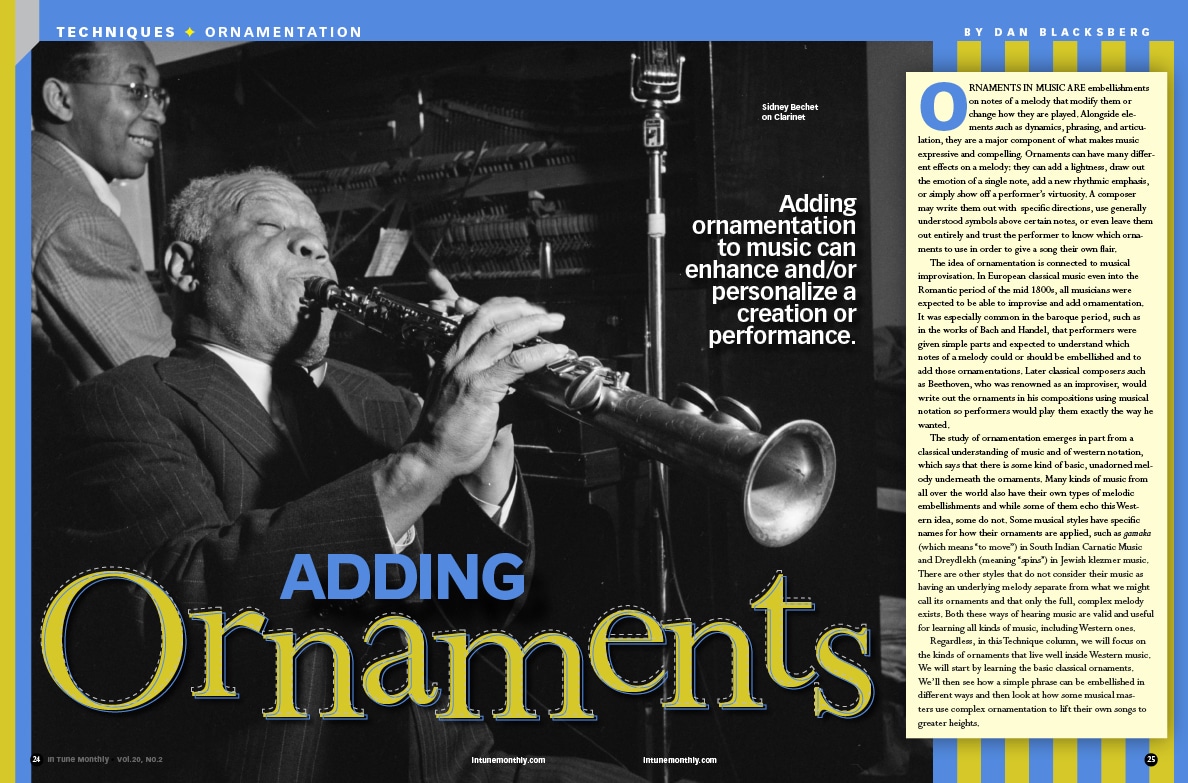Ornaments in music are embellishments on notes of a melody that modify them or change how they are played. Alongside elements such as dynamics, phrasing, and articulation, they are a major component of what makes music expressive and compelling. Ornaments can have many different effects on a melody: they can add a lightness, draw out the emotion of a single note, add a new rhythmic emphasis, or simply show off a performer's virtuosity. A composer may write them out with specific directions, use generally understood symbols above certain notes, or even leave them out entirely and trust the performer to know which ornaments to use in order to give a song their own flair.
The idea of ornamentation is connected to musical improvisation. In European classical music even into the Romantic period of the mid 1800s, all musicians were expected to be able to improvise and add ornamentation. It was especially common in the baroque period, such as in the works of Bach and Handel, that performers were given simple parts and expected to understand which notes of a melody could or should be embellished and to add those ornamentations. Later classical composers such as Beethoven, who was renowned as an improviser, would write out the ornaments in his compositions using musical notation so performers would play them exactly the way he wanted.
To keep reading, click 'subscribe' below!

